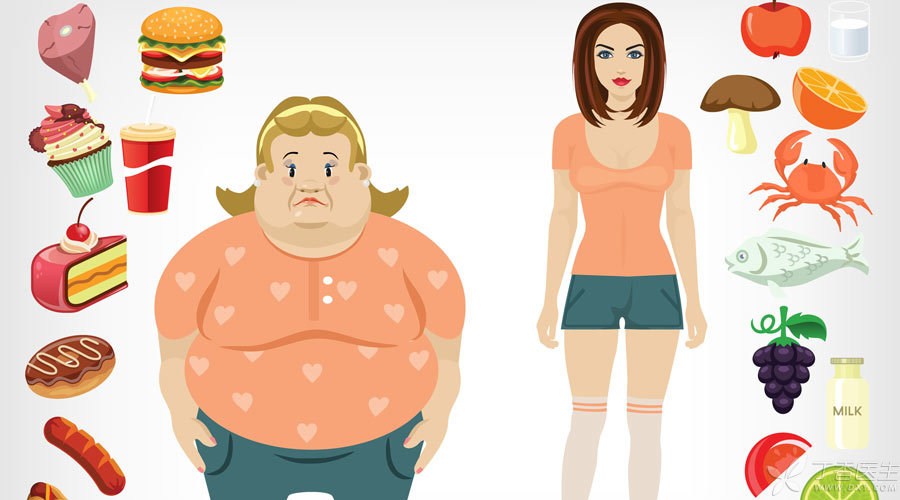
When it comes to malnutrition, many people will think that it is emaciation, that children do not grow tall or fleshy, or that adults are as thin as skin and bones.
But malnutrition is far more than that!
Overweight and obesity are also malnutrition
We always say that fat people [are overnourished], but their malnutrition problem is very serious.
Adults
For Chinese adults, if BMI ≥ 24, they are overweight. BMI ≥ 28 is obesity.
BMI is called body mass index and is used for nutritional assessment of obesity. The calculation formula is: BMI = weight (kg)/[square of height (m)].
According to a 2014 WHO report, 39% of adults in the world are overweight and 13% are obese.
Children, especially under 5 years of age
Overweight and obesity in children mean that their weight is much higher than that of children of the same age.
Apart from some genetic reasons, overweight and obesity in children are generally the [excess energy] type of nutritional structure imbalance caused by overeating and partial eating and picky eating: dislike vegetables, like snacks, do not like exercise, etc., which will make the small fat people unable to fully meet their own nutritional needs and further gain weight.
The global prevalence of obesity has increased year by year, and 42 million children under the age of 5 are overweight or obese, surpassing stunted and emaciated children of the same age.
How to eliminate this malnutrition
- Moderately control dietary energy intake and follow the principles of low sugar, low fat and high fiber diet. Eat less and eat more, eat a balanced diet and eat more fruits and vegetables. You can write a food diary to record your diet and avoid overeating. Exercise consumes excess body fat, and do more aerobic exercise, such as brisk walking, cycling, jogging, dancing, swimming, etc. Adults insist on exercising for at least half an hour a day and at least 5 days a week. Children should exercise for more than one hour. If children are often regarded as slow-minded and low-intelligent because they are fat, they also need to pay attention to psychological intervention and build up self-confidence.
Diabetes, high blood pressure, hyperlipidemia, heart disease and certain cancers
These chronic diseases, also known as [non-communicable diseases], are also malnutrition, and the population is developing towards younger age.
These diseases have a long incubation period and are often closely related to the imbalance and damage of the body’s nutritional metabolism. Sometimes it is accompanied by obese malnutrition. The use of nutrients is different from that of healthy people. However, it can be controlled and improved through diet and exercise.
Too little exercise is an important factor in the occurrence of these diseases. Therefore, it is recommended to exercise at least 3-5 times a week, with an average of more than half an hour per day.
At the same time, we should eat a reasonable and balanced diet. It can be measured by the [ten tennis] principles:
- The meat eaten every day should not exceed the size of 1 tennis ball. The staple food eaten every day is the size of 2 tennis balls. The fruit eaten every day should be the size of 3 tennis balls. The vegetables eaten every day shall not be less than the size of 4 tennis balls; Add [four ones] every day, i.e. 1 egg, 1 kg of milk, 1 handful of nuts and 1 bean the size of playing cards.
Micronutrient deficiency
Some people may have normal body shape and weight, but iron, zinc, iodine, vitamin A, folic acid and other nutrients are deficient, and the nutrition level is already lower than the low value of physical health.
Lack of trace elements will lead to various minor physical problems.
The following small body signals, you may as well check yourself:
- Fatigue, lethargy, anemia: possible iron deficiency; Tension and loss of appetite before menstruation: zinc deficiency may occur; Muscle spasm, insomnia: possible magnesium deficiency; Cold hands and feet, low immunity: possible selenium deficiency; Paralysis of hands and feet, weakness: Potassium deficiency may occur; Dry and rough skin, decreased vision, night blindness: vitamin A deficiency may be possible; Dry eyes, congestion, easy tension, beriberi, halitosis: may lack B vitamins; Urethral infection, wound healing time is long: vitamin C deficiency may be possible; Fetal malformation: Folic acid deficiency may occur during early pregnancy.
Children’s growth retardation and emaciation
Children’s growth retardation and emaciation are generally mainly related to nutrition, heredity, children’s mental state, sleep or acute and chronic diseases.
However, even if genes determine congenital deficiencies and growth retardation, it can be improved if efforts are made the day after tomorrow.
- Parents should ensure that their children have sufficient nutrition, Ensure a balanced diet, Increase protein intake. Foods rich in high-quality protein, There are milk, lean meat, fish, shrimp, eggs, bean products, etc. Ensure the intake of calcium, phosphorus and other trace elements, Because calcium and phosphorus are the main components of bones. Exercise has a great effect on promoting children’s growth and height, accelerating the whole body blood circulation, improving the nutrition of muscle and bone system, and accelerating the proliferation of bone cells. Ensure 20-40 minutes of exercise every day, such as basketball, football, aerobics, stretching gymnastics, rope skipping, swimming, and limb extension exercises such as pull-up.
Adult emaciation
The last thing to say about malnutrition is that many skinny people who are not fat, have no disease and are not sure why.
Generally, adults with BMI < 18.5 are called emaciation, which is firstly related to heredity. Secondly, irregular diet, diseases, stress, bad work and rest habits, etc., will have an impact to varying degrees.
If thin people want to gain weight healthily, they should make a comprehensive evaluation according to age, height, weight and activity. The general principle is to make energy intake exceed energy consumption. What should be done?
